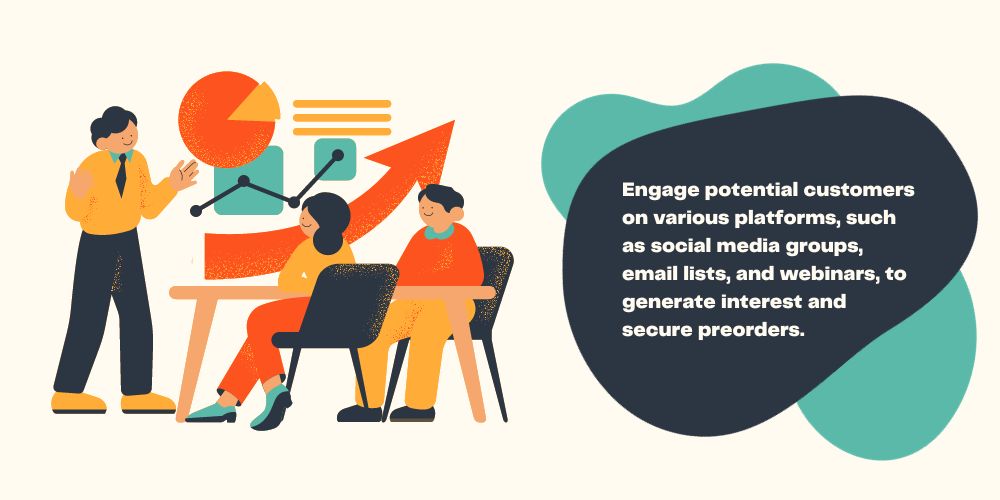How To Promote Digital Products: 11 Ideas for Marketers
The significant rise in sales of digital goods has led many companies to try them for themselves. If you don’t know where to start yourself, we’re here to help.
Since the creation of the first business, people have been perfecting the way in which they promote and sell their products. It’s become like second nature at this point. However, for the first time ever, there are quite a few businesses that don’t sell physical products at all. Because of the widespread popularity of the internet, digital-only goods are becoming more popular.
You no longer need to produce goods and ship them off to customers. You can create digital items that people simply download and start using. While many old forms of promotion translate to this new type of product, many businesses have to redefine their approach. If you need advice on how to do this yourself, this guide covering some ideas on how marketers can promote their digital products is here to help.
Run a Big Launch Campaign

Before you even start selling your new digital products, one of the most effective ways to promote them is by orchestrating a launch campaign. This strategy involves generating excitement and anticipation around your product well before its official release. Since you don’t have to worry about a physical product, it’s easy to do everything online. After all, people don’t need to see it in person. Instead, engage potential customers on various platforms, such as social media groups, email lists, and webinars, to generate interest and secure preorders.
For example, you could create a series of teaser videos or share behind-the-scenes insights about your product’s development process. Make sure to share these campaigns on channels that are popular with your target audience and encourage them to spread the word about your launch. There’s a lot more to know about each of these marketing platforms, but we’ll cover them in more detail later.
Create an Online Storefront
Since you’re no longer relying on a brick-and-mortar location to sell and distribute goods, you need to make sure your site features an online storefront. Think of it as a virtual marketplace where customers can browse and purchase your digital products easily. It’s important to use an appealing and user-friendly design with clear navigation that makes it simple for visitors to locate and purchase your digital products.
When designing your website storefront, focus on highlighting the value and benefits of your digital products. Include captivating visuals, such as screenshots, demo videos, and testimonials from satisfied customers. These elements will help potential customers feel more confident in their purchase and can lead to higher conversion rates.
Find a Digital-Friendly E-Commerce Website
Just because you only sell online, though, doesn’t mean you have to limit sales to your company website. There are plenty of online storefronts that have the capability to sell digital goods to their customers. A digital-friendly e-commerce platform will already be visually appealing, user-friendly, and secure. Plus, it’ll have a built-in customer base for you to sell to.
Bear in mind that an optimal website will give you the ability to track performance, precisely manage inventory and orders, and handle customer inquiries. Various e-commerce sites cater to digital products in different ways, so make sure they handle digital goods in a way that makes sense for your product.
Utilize Email Marketing
Once you know where to sell your digital goods, it’s time to set up your marketing strategies. Email marketing is a good place to start. It allows you to engage directly with your audience, offering them special deals, updates, and other valuable content related to your digital products. It’s also a great way to nurture relationships with potential customers and keep them interested in your offerings.
To make the most of email marketing, start by building an email list of subscribers who’ve demonstrated interest in your digital products. You can collect email addresses through opt-in forms on your website storefront, blog, and social media channels. Once you’ve established a list of subscribers, create well-crafted email campaigns that showcase your digital products in a useful and engaging way.
Remember to regularly analyze and monitor the performance of your email campaigns. This will help identify what’s working and what needs improvement, enabling you to optimize your email marketing efforts for better results.
Start a Blog

Blogging is another excellent strategy for promoting digital products, as it allows you to share valuable content that educates and engages your target audience. By publishing consistent, informative blog posts related to your digital products, you can showcase your expertise and build credibility with potential customers. You can also use it to better explain your products to newcomers.
When creating blog content, focus on providing actionable tips, expert advice, and insightful information that your target readers will find useful. For instance, publish articles that explore common challenges your audience faces and explain how your digital products can help solve these issues. You can also write in-depth guides, tutorials, and case studies that demonstrate the benefits and features of your digital products.
Look Into Affiliate Marketing
If you don’t have the resources to keep up with a blog or just want to expand your reach, look into affiliate marketing. This method effectively promotes your digital products through networks of partners, or affiliates, who earn a commission whenever they refer a sale to your online storefront. Since this method of promotion can help extend your reach, it’ll drive more traffic and sales to your digital products than you could ever do on your own.
When starting an affiliate marketing strategy, research popular affiliate networks in your niche and sign up to build relationships with potential affiliates. Provide them with promotional materials, such as banners, unique affiliate links, and sample content so that they can effectively promote your digital products on their websites, blogs, or social media channels.
Make sure to monitor the performance of your affiliate partners, regularly assessing their referral activity and sales generated. This data will help identify top-performing affiliates and enable you to further optimize and grow your affiliate marketing program.
Take to Social Media
An undeniable breakthrough in the world of marketing is the ability to tkae advantage of social media platforms. By harnessing the power of various social media channels, marketers can effectively promote their digital products and catch the attention of potentially interested customers. When first getting into social media yourself, consider creating engaging content that resonates with your target audience, and don’t underestimate the influence of popular hashtags. Encourage users to share, like, and comment on your posts to increase visibility and reach even more potential buyers.
Also, be responsive to their comments and questions, fostering positive relationships and building trust. This will, in turn, help make your brand more approachable and likable. The more goodwill you foster in social communities, the more users will take notice.
Create Informative Videos
Videos have become a powerful tool for marketers to captivate their audience and convey information in an easily digestible format. Creating informative videos to showcase your digital products and their features and benefits will undoubtedly pique the audience’s interest, especially since they can’t simply go to a store to see your product for themselves.
Craft videos that address FAQs, provide value, and entertain viewers with intriguing storytelling. By posting these videos on platforms like YouTube or Vimeo, you can reach a broader audience and increase your digital products’ exposure. Embed the videos in blog posts, share them on social media, or use them in email marketing campaigns for maximum impact.
Boost Your SEO Efforts

No matter which strategies you decide to use, you must pay attention to your search engine optimization (SEO) efforts to ensure that your digital product reaches the right audience. Implementing good SEO practices will increase your visibility on search engines like Google and Bing, leading more people to discover your digital products.
Start with keyword research to identify the most relevant terms and phrases related to your digital products, and use these keywords throughout your website and content intentionally (but without stuffing). Use helpful SEO tools that will drive more organic traffic. Also, be sure to optimize your website’s technical elements, such as site structure, URLs, and meta tags, for optimal search engine performance.
Set Up Free Trials
Since interested users won’t have a good way to interact with your product without buying it, an excellent way to pique their interest is to offer a free trial of your digital product if possible. Giving them a taste without requiring them to commit financially will help significantly increase your sales.
In the software and SaaS world, it’s common to offer a 14- or 30-day trial. During this period, users can explore the product’s features and experience its benefits. Keep in mind that you should pay close attention to the user feedback during the trial period. You want to make sure you address any concerns and refine the product as needed.
Incentivize Word-of-Mouth
If a trial isn’t possible, word-of-mouth marketing remains one of the most effective promotional strategies out there. To get people talking about your digital product, consider offering incentives or rewards to those who share or recommend your product to others. Make it easy for advocates to spread the word by providing shareable links, custom referral codes, or social media sharing buttons. Since digital products are easy to obtain, this strategy can lead to a snowball effect, further amplifying your product’s reach and success.
